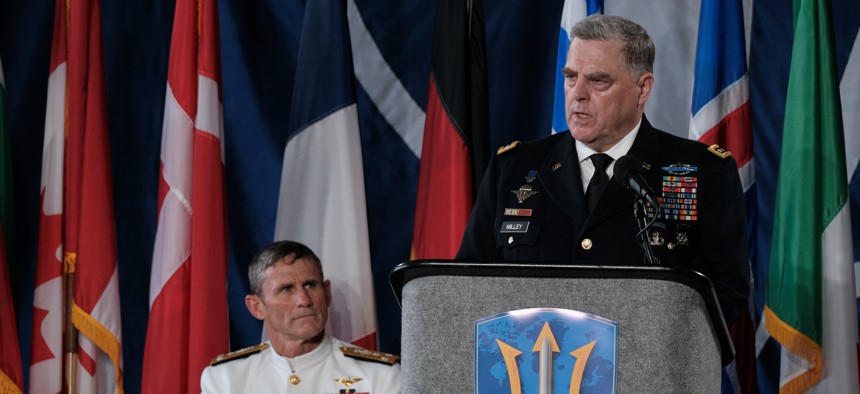
New technologies are so altering the “character of war” that the United States and allies who don’t hold the advantage may suffer another slaughter on par with World Wars I and II, warned the U.S. military’s top officer.
“If we don't get there first-est with the most-est, and we don't put the pedal to the metal and do this right over the next 10 to 15 years, we are condemning a future generation to what happened 76 years ago,” Joint Chiefs Chairman Gen. Mark Milley said Thursday, at the NATO’s new operational headquarters, Joint Force Command Norfolk in Virginia.
The mission of the now fully operational command is to fight a future Battle of the Atlantic, if necessary, and deter another great power war like those of World War I and World War II, which killed 150 million people globally.
“That is the butcher’s bill of great power war. That's what this international order that's been in existence for seven and a half decades is designed to prevent. That's what JFC Norfolk is all about, is to prevent that outcome,” he said.
The world is not just experiencing a challenge to the established international order but also another significant change in the “character of war,” Milley said, meaning how countries fight, which technology is used, and through which organizations, such as NATO. The chairman argued that the last time there was such a change occurred between the two world wars, Milley said, when available technologies evolved to include radios, tanks and aviation. Countries like the United States, Britain, and Russia were applying them in different ways, but Nazi Germany did it better, combining and adapting them to their way of war-fighting and leadership development, allowing them to overwhelm Eastern Europe within 18 months.
The United States and NATO militaries must master within the next 15 years the numerous technologies becoming available today, from long range fires to artificial intelligence and robotics, he said.
“I would argue that the country that masters those technologies, combines them with their doctrine, develops their leadership to take maximum advantage of them, is likely going to have significant—perhaps even decisive—advantage at the beginning of the next war. And in fact, that may be as long as the war lasts,” Milley said.
The 2022 Pentagon budget requests $112 billion to fund research, development, test, and engineering in areas such as hypersonics, cyber, and biotechnology. The technology investments are seen as a means to compete against near peer adversaries such as China and Russia, the former of which already has several advantages in this area.
No comments:
Post a Comment